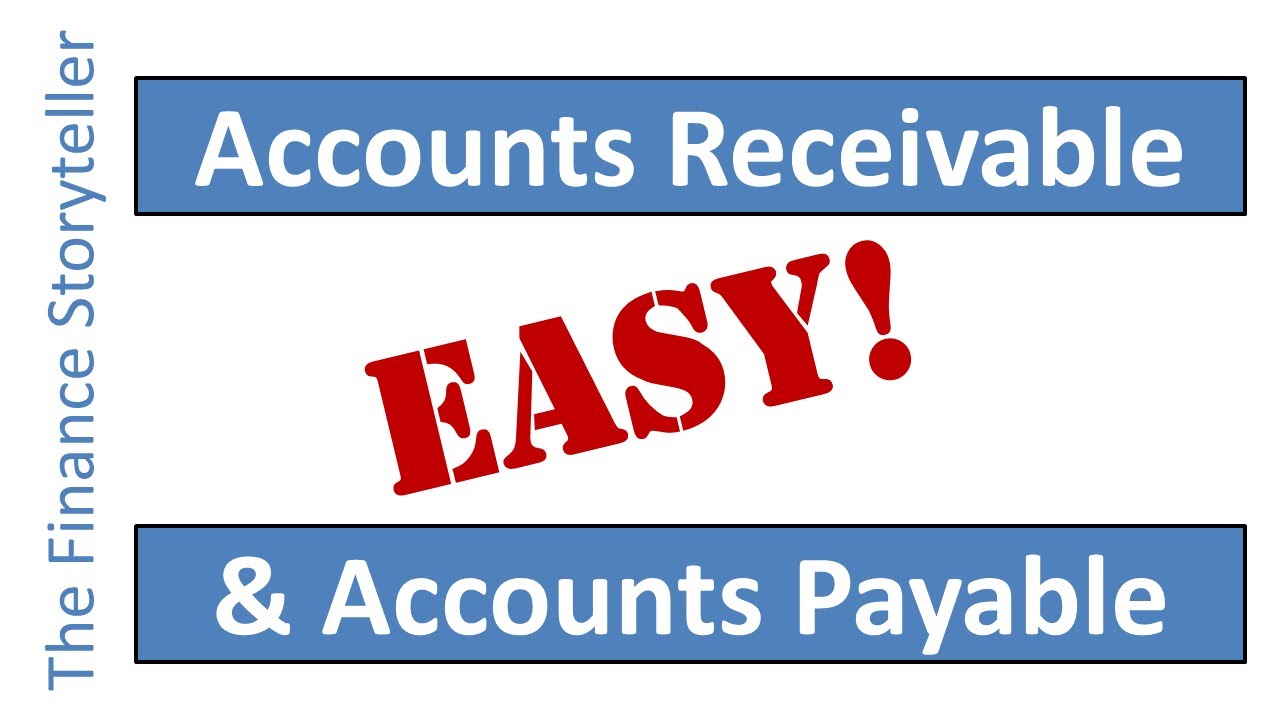Receivables in accounting are a fundamental aspect of financial management that can greatly impact a company’s success. These receivables refer to outstanding payments owed to a business by its customers. From a business perspective, the thought of receivables can be highly intriguing as they represent potential future cash flow and serve as a valuable asset. The concept of receivables is captivating because it highlights the trust and confidence a company has in its customers to fulfill their payment obligations. Moreover, the management of receivables requires effective strategies and monitoring, making it an engaging area of study for those interested in financial analysis and risk management. By analyzing the trends and patterns of receivables over time, accountants can gain insights into a company’s financial health and identify opportunities for improvement. Understanding how to manage and optimize receivables is an essential skill in the business world, as it can directly impact a company’s liquidity and profitability. Ultimately, the dynamic nature of receivables in accounting offers an intriguing glimpse into the financial workings of a business and the various strategies employed to ensure stable cash flow and long-term success.

Receivables in Accounting
| Term | Definition |
|---|---|
| Accounts Receivable | Also known as trade receivables, accounts receivable represents the amount owed to a company by its customers for goods or services sold on credit. It is a current asset on the balance sheet and reflects the expected cash inflows from the customers. |
| Notes Receivable | Notes receivable refers to a written promise from a customer or another party to pay a specific sum of money on a specified future date. It is a more formal document compared to accounts receivable and may include interest charges or specific repayment terms. |
| Trade Receivables | Trade receivables encompass both accounts receivable and notes receivable. These represent the amounts owed by customers in the normal course of business operations. They are a vital component of a company’s working capital and play a significant role in cash flow management. |
| Aging of Receivables | Aging of receivables refers to the analysis of outstanding receivable balances based on their age. This analysis helps businesses identify and manage potential bad debts by categorizing receivables into different time periods, such as 30, 60, or 90 days overdue. It aids in assessing the creditworthiness of customers and facilitates effective collection efforts. |
| Allowance for Doubtful Accounts | The allowance for doubtful accounts is a contra-asset account that offsets the accounts receivable balance to reflect the estimated amount of uncollectible receivables. It serves as a provision for potential losses due to customers’ inability to pay, disputes, or bankruptcies. Companies use various methods, such as percentage of sales or aging analysis, to estimate this allowance. |
Title: “Mastering the Cash Flow Tango: A Dance Between Receivables and Payables” Accounts Receivable (AR) and Accounts Payable (AP) are two vital components of a business’s financial landscape. AR represents the money owed to a company by its customers, while AP refers to the money a company owes to its suppliers or creditors. These monetary transactions form the dynamic rhythm of a captivating dance, known as the cash flow tango. AR serves as the lifeblood of a business, fueling its operations and growth. It showcases the company’s ability to generate revenue and collect payments from customers. A well-managed AR process ensures timely payment collection, bolstering the financial health of the organization and enhancing its credibility. By optimizing AR, businesses can maintain a steady cash flow, enabling them to reinvest profits, expand operations, and nurture customer relationships. On the other side of the dance floor, AP represents the company’s financial obligations to its suppliers and creditors. Effectively managing AP is crucial to maintaining healthy vendor relationships, ensuring the timely delivery of goods and services, and securing favorable terms. By streamlining AP processes and negotiating advantageous payment terms, businesses can optimize their cash flow, enhance liquidity, and strengthen their financial position. Just as in a tango, the harmony between AR and AP is essential for a successful performance. Skilled financial management involves synchronizing the two, ensuring that inflows and outflows align to maintain a healthy and sustainable cash flow. Striking the right balance between collecting receivables promptly while managing payables efficiently is key to maximizing profitability and maintaining a competitive edge in the business world. The cash flow tango presents a captivating opportunity for businesses to master the art of financial management. By embracing the rhythm of AR and AP, businesses can orchestrate a harmonious dance that propels their growth, stability, and overall success.
What Are Receivables in Accounting?
In the world of accounting, receivables refer to the money owed to a business by its customers or clients. They are essentially the outstanding payments that are yet to be received by the company for the goods sold or services rendered. Receivables can be a crucial aspect of a company’s financial position, as they represent the potential cash inflows that will contribute to its revenue.
Types of Receivables
Accounts receivable is the most common type of receivable, which refers to the credit sales made by the company where the payment is due within a specific timeframe. It is typically recorded as an asset on the balance sheet. Another type is notes receivable, which involves the issuance of promissory notes by the customers to acknowledge their debt and the promise to pay in the future. Lastly, there are trade receivables, which are debts owed by other businesses for the goods or services provided.
Recognition and Measurement of Receivables
Receivables are recognized and measured in the financial statements based on certain accounting principles. Revenue recognition is a fundamental principle that guides the recognition of receivables. According to this principle, revenue should be recognized when it is earned and when there is reasonable certainty of its collection. This means that receivables are usually recorded at the time of sale or the completion of services.
The measurement of receivables involves determining their carrying value on the balance sheet. The carrying value is the amount at which the receivables are initially recognized, and it includes the face value of the receivables less any allowances for doubtful accounts or discounts. Allowances for doubtful accounts are estimates made by the company to account for the possibility of some customers defaulting on their payments.
Importance of Managing Receivables
Effective management of receivables is crucial for maintaining a healthy cash flow and ensuring the financial stability of a company. Here are three reasons why managing receivables is vital:
1. Cash Flow Optimization: Receivables represent the company’s expected cash inflows, and by efficiently managing them, a business can optimize its cash flow. This involves setting appropriate credit terms, monitoring payment collections, and taking necessary actions to minimize delays or defaults in payments.
2. Working Capital Management: Receivables are a part of a company’s working capital, which is the capital required to finance its day-to-day operations. By effectively managing receivables, a company can ensure that it has enough cash to cover its operational expenses, invest in growth opportunities, and meet its short-term obligations.
3. Risk Mitigation: Managing receivables also involves assessing and mitigating the risks associated with credit sales. This includes conducting credit checks on customers, setting credit limits, and establishing a robust collection process. By minimizing the risk of non-payment or bad debts, a company can protect its financial stability and profitability.
Tools and Techniques for Receivables Management
Several tools and techniques can be employed to effectively manage receivables:
1. Credit Policies: Establishing clear and consistent credit policies helps set expectations for customers and ensures they understand the terms and conditions of credit sales. This includes defining credit limits, payment terms, and consequences for late payments.
2. Credit Analysis: Conducting thorough credit analyses before extending credit to customers is essential. This involves evaluating their creditworthiness, financial stability, and past payment history. Credit analysis helps minimize the risk of non-payment and allows businesses to make informed decisions regarding credit limits and terms.
3. Invoicing and Collections: Timely and accurate invoicing is crucial for prompt payment collection. Implementing efficient invoicing processes, including automated systems and regular follow-ups, helps ensure that customers are aware of their outstanding payments and are more likely to make timely payments.
4. Receivables Financing: In certain cases, businesses may opt for receivables financing to improve their cash flow. This involves selling their receivables to a third party, such as a bank or a factoring company, at a discounted rate. Receivables financing allows businesses to convert their receivables into immediate cash, but it comes with associated costs and risks.
5. Collection Agencies and Legal Action: In situations where customers consistently default on their payments, businesses may engage collection agencies or resort to legal action to recover the outstanding amounts. These actions should be taken as a last resort and should be handled with caution to maintain positive customer relationships.
In Conclusion
Receivables are an integral part of accounting and play a significant role in a company’s financial health. Understanding the types of receivables, their recognition and measurement, and the importance of managing them effectively can help businesses optimize their cash flow, mitigate risks, and maintain a strong financial position.

